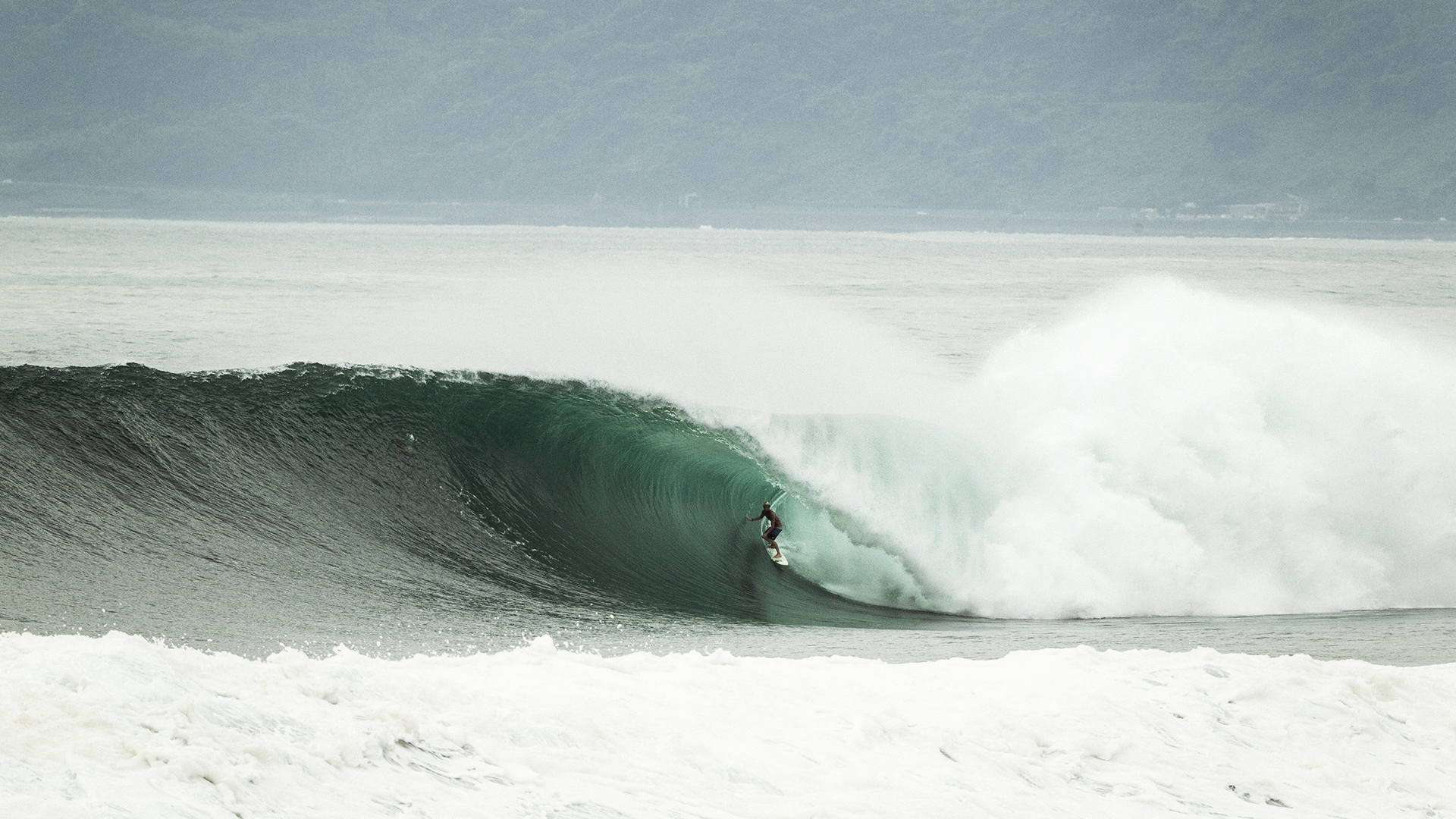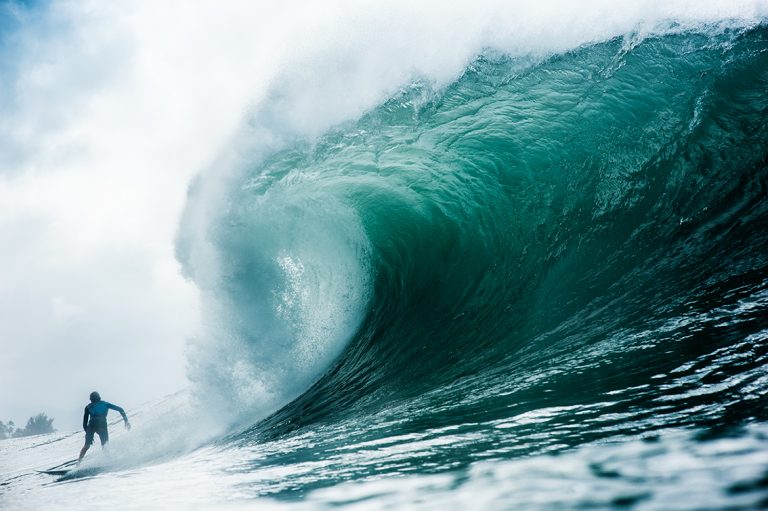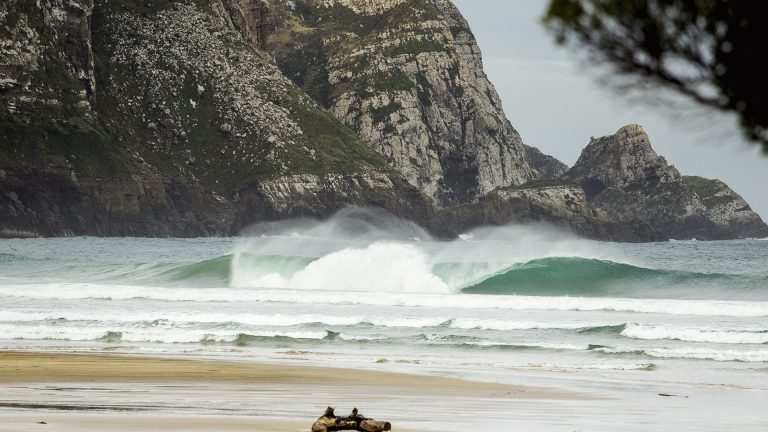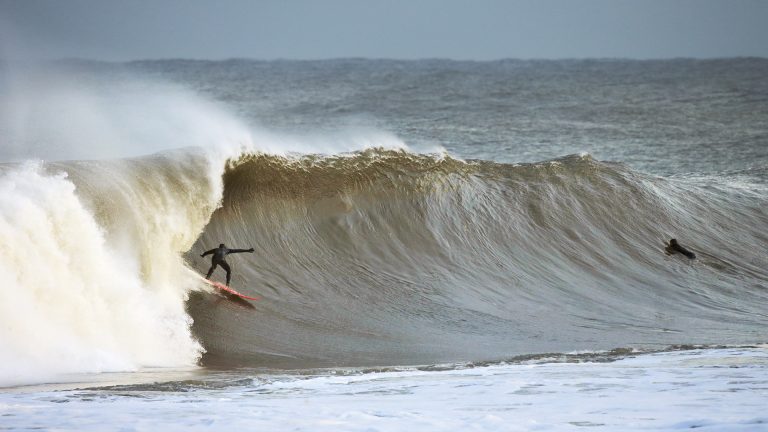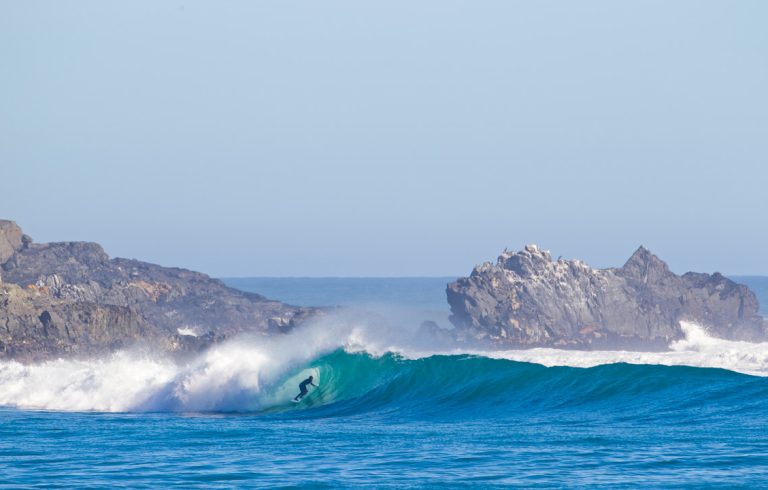JJF, big in Japan. Photo: Nate Lawrence
by Sam Bleakley
For travelling surfers the Japanese are gracious hosts. They have a great belief in the transience of the world, in impermanence and renewal. Surfing sits beautifully in a place that values the importance of both nature and innovation, of the given forces of life and of cultural change in dialogue.
As a result, there are two million surfers in Japan blending tradition and experimentation. Travelling here opens two horizons of possibility – one looks out to sea, hawk-eyed for the next set, sensitive to the local conditions, rapidly soaking up the local tide and rip conditions, watching where the locals sit in the line up, checking out the sea life.
But this posture literally turns your back on the land you have visited. Inquisitive surfers take time to also go inland, meet the people and the landscape, soak in the culture. I decided to turn my back on the beach and ride by car and ferry from Tahara to Ise, in Western Honshu.
The coast here is deeply convoluted, lined in maple, birch, cypress and cedar trees, and famous for both oyster pearl production and its Grand Shinto Shrine. Shinto – ‘the way of the gods’ – is Japan’s oldest religion, a nature-based practice, and Ise has the most sacred shrine in the country. It is believed to be the home of the spirits of all the past emperors, and dedicated to ‘Amaterasu’ – the sun goddess.
The mischievous weather spirits must have been hanging out their laundry to dry, as the air was heavy with moisture – yeasty and torpid, forcing me to be slow, perhaps to notice. I arrived at the ‘toril’ – a gateway that marks the entrance to the shrine and the main icon of Shinto. The site is filled with towering cedar trees broken by rivers and streams – wood and water everywhere, so that the spirits of the place feel at home. Even the temple buildings are made of burnished cypress. The surfaces are smooth and lustrous, the grain and colour left natural, with intricate details added.
The craftsmanship is flawless. There is a tradition of bringing beauty into everything in Japan, from building to making tea to social manners. Past and present blend seamlessly, so that even the factory workers making televisions talk of the sprites in the tube. Following a tradition since AD 690, the whole temple complex is completely rebuilt every twenty years in accordance with Shinto principles of purity and renewal.
Today few Japanese are pure Shintoists, but most observe various Shinto and
Buddhist practices. Many Shinto habits pervade everyday Japanese life, from an
emphasis on purification to an obsession with austere aesthetics and the celebration of the cherry blossom. At the ‘jinga’ shrines the visitors make prayers to different deities – known as ‘kami’ – that preside over all things in nature, both animate and inanimate. On the way out you can buy ‘omamori’ good luck charms, hoping for health, safety and success.
Shinto is deeply connected to sumo wresting, and the Japanese martial arts are
often closely associated with Zen Buddhism. Both pride themselves on total
concentration of mind and body, something surfers can readily appreciate where
balance, control, speed and accuracy are paramount. In sumo, surfing and martial
arts, living in the present in a sense eradicates time, for there is no mindless
wandering to recollection, and no fruitless future guesswork. This state of mind is when you surf at your best, mindful, not mindless. This is when that current runs through you, the spirit bursts into flame, but quietly, and you are fully absorbed.
Sometimes you learn a lot when you escape from the waves for a day and turn your
attention to that other horizon, inland.

